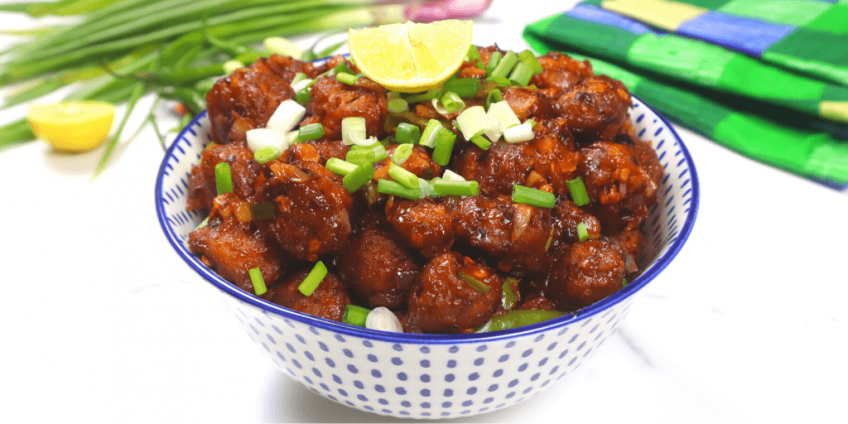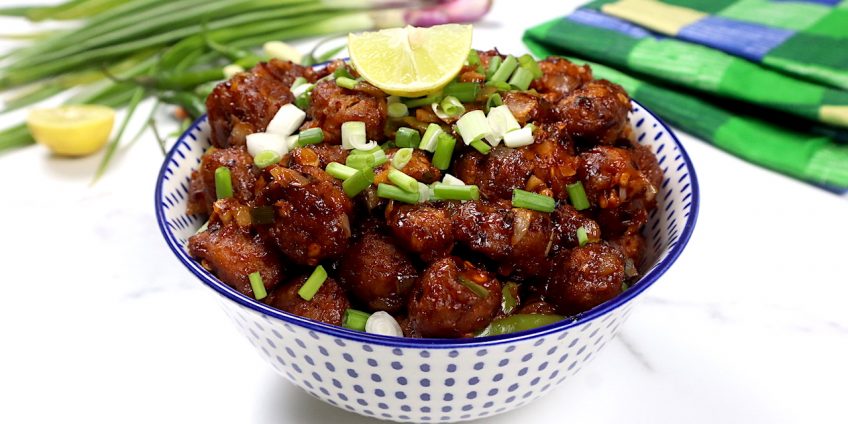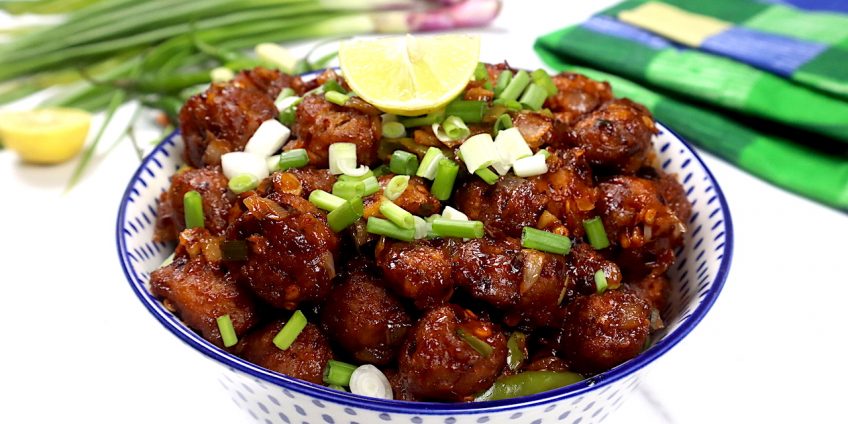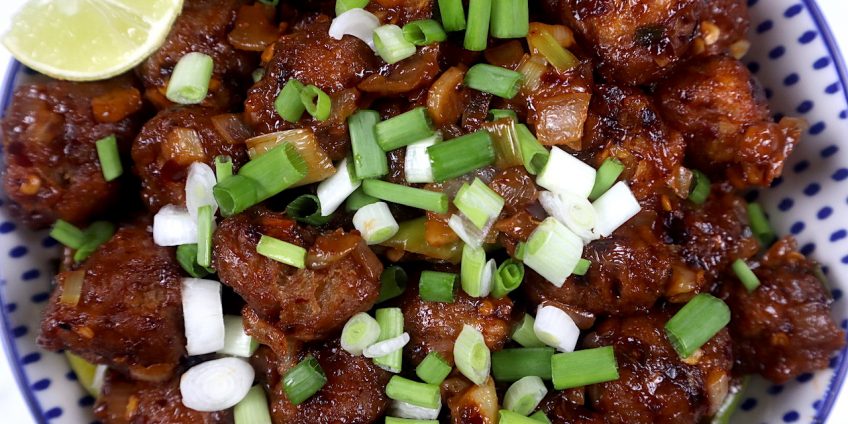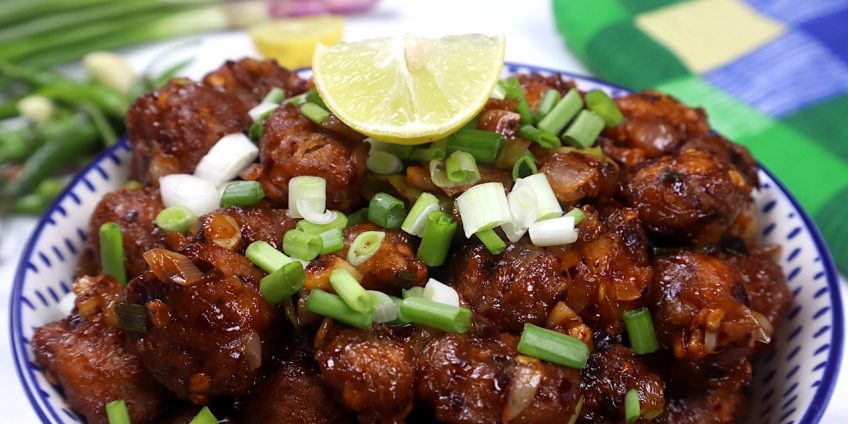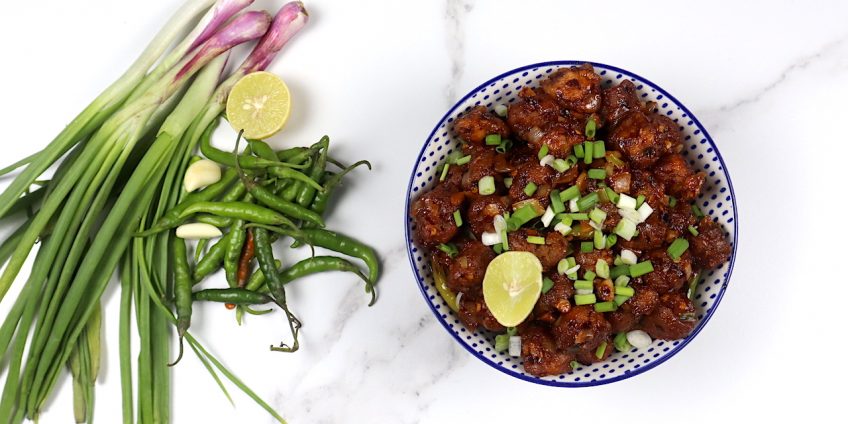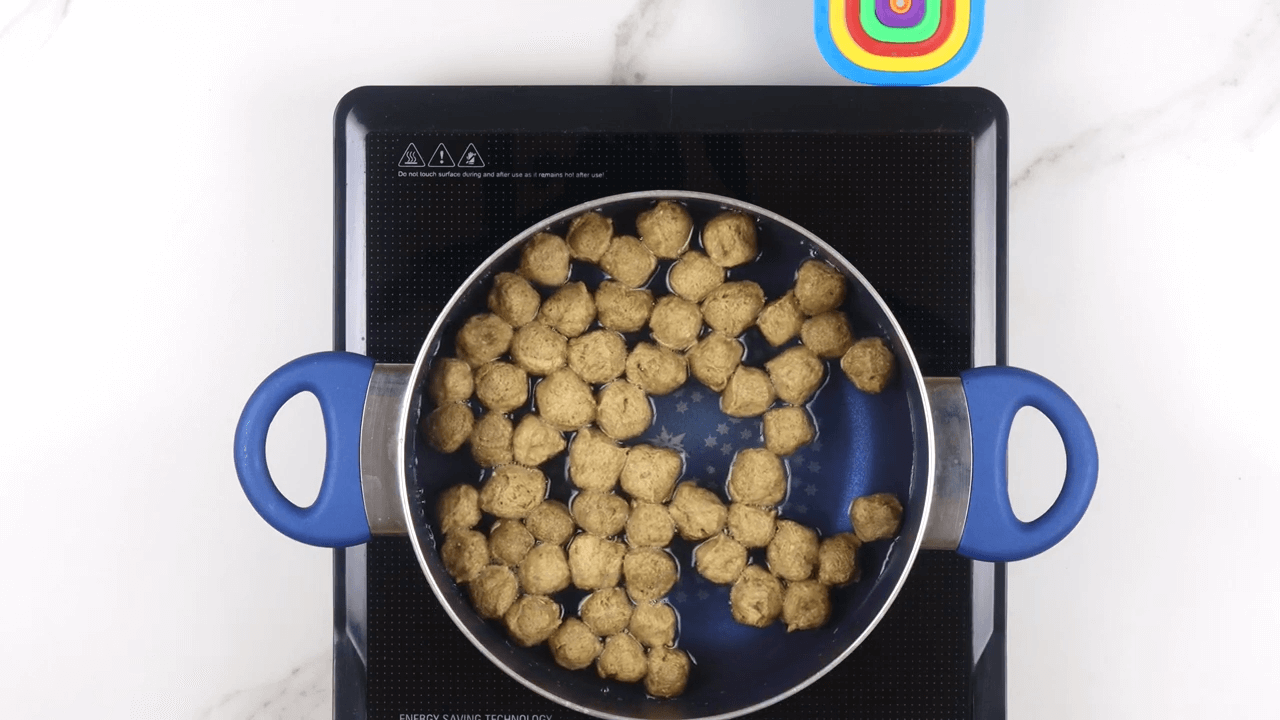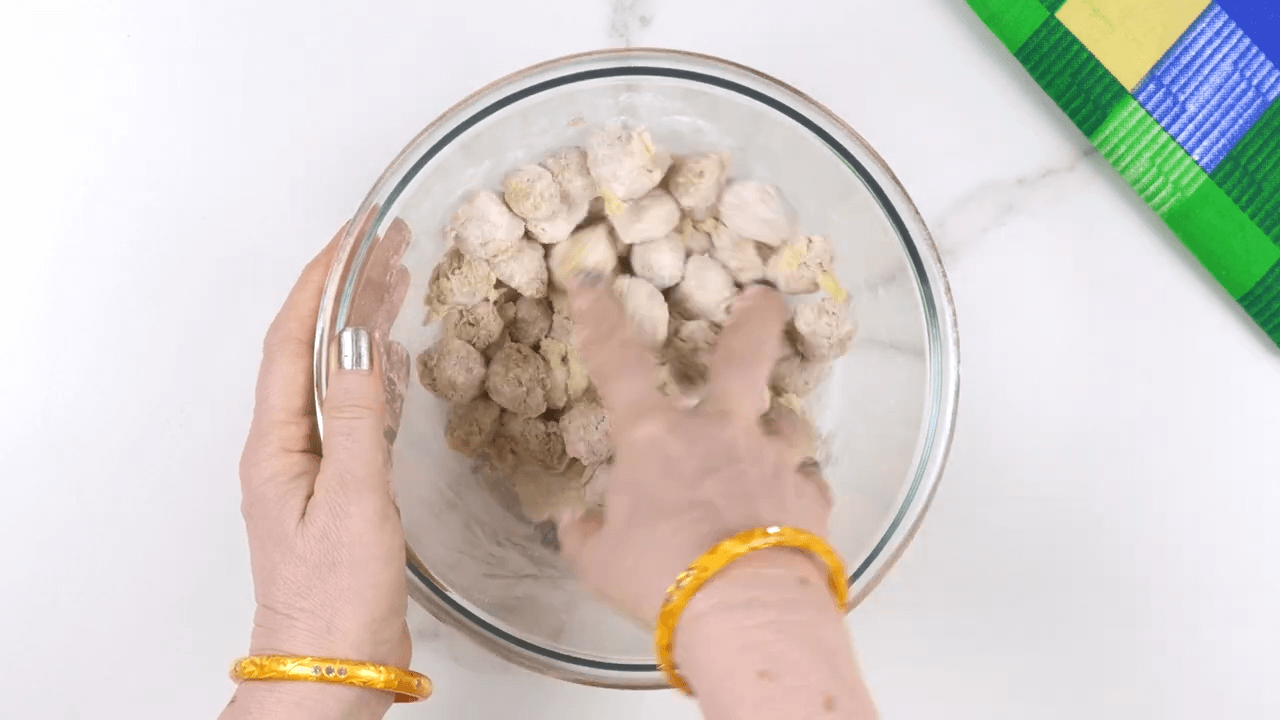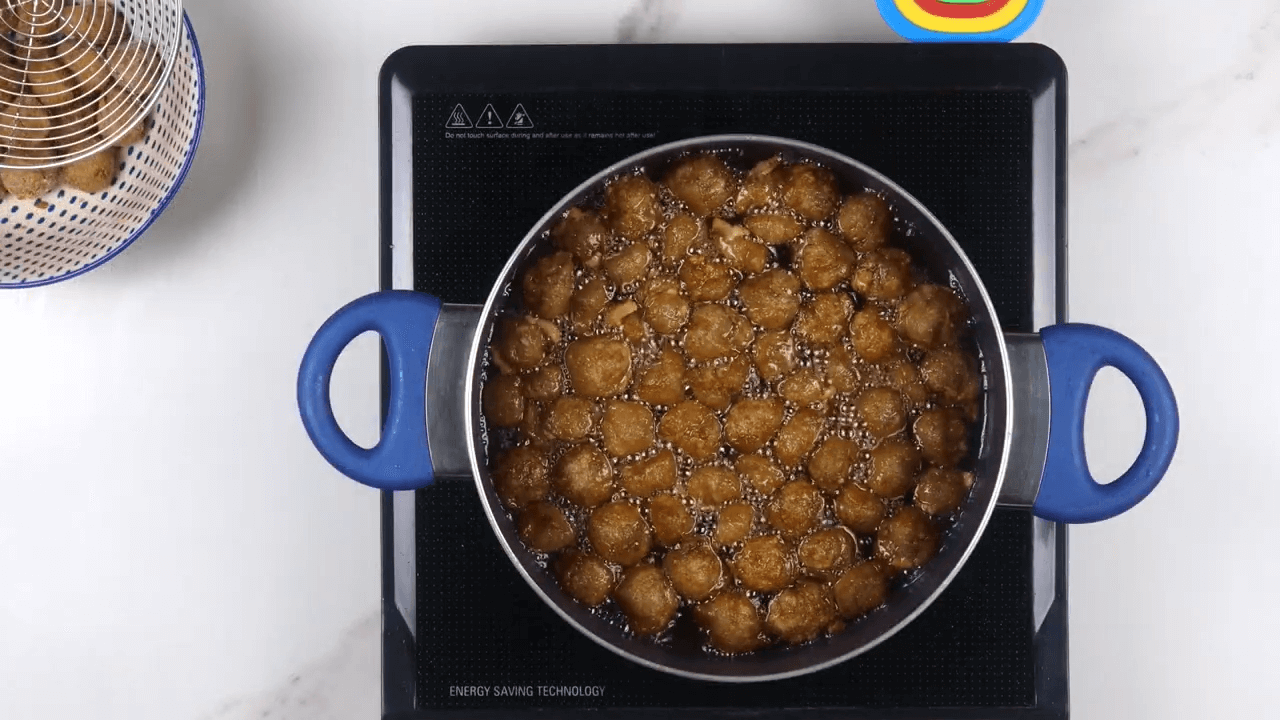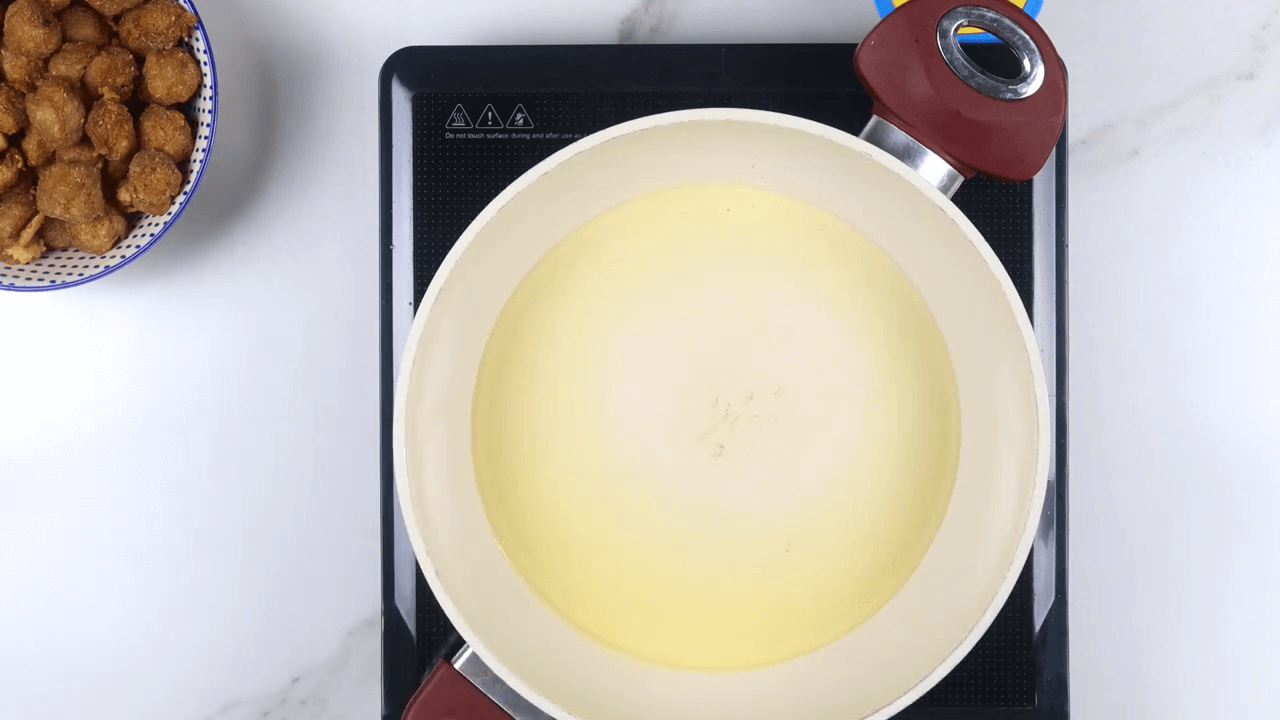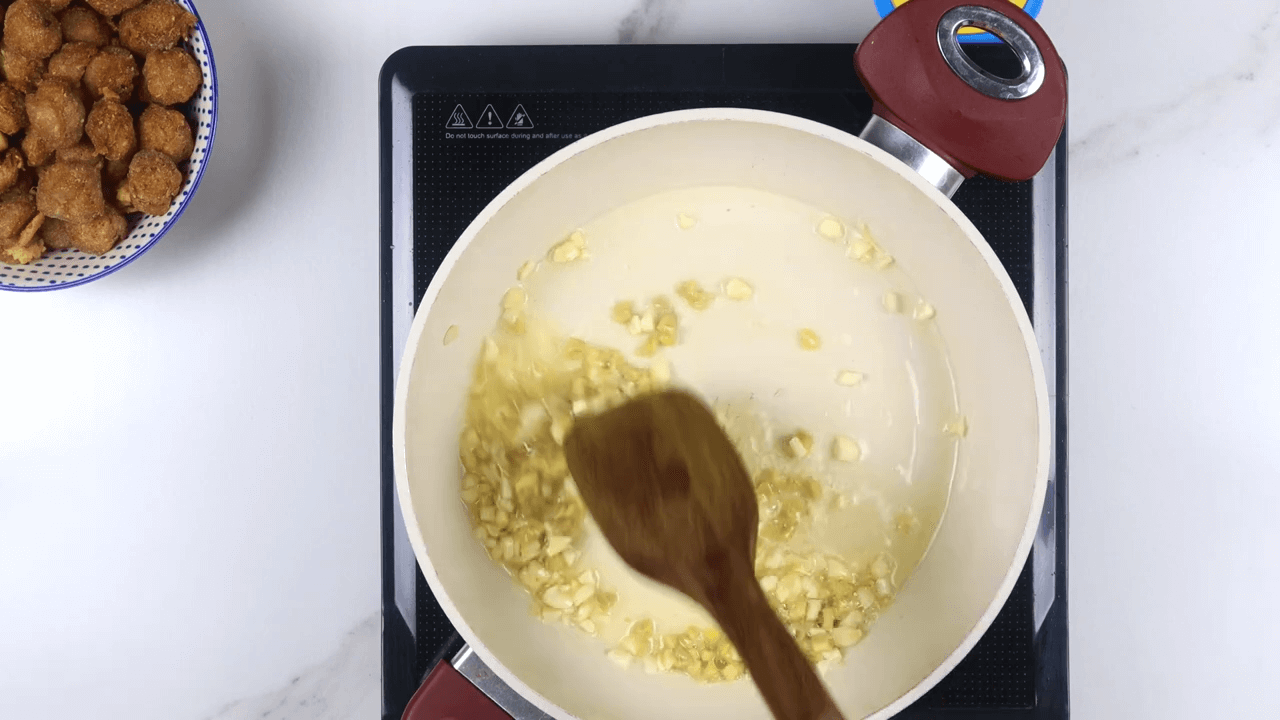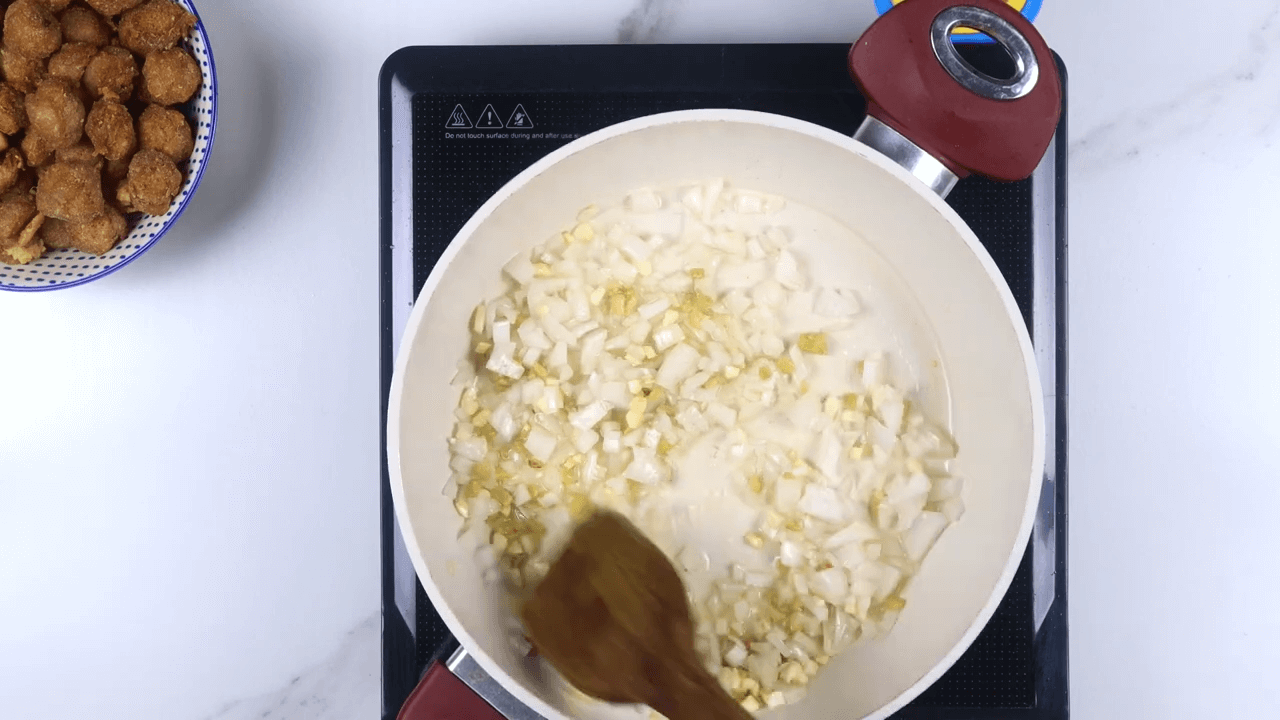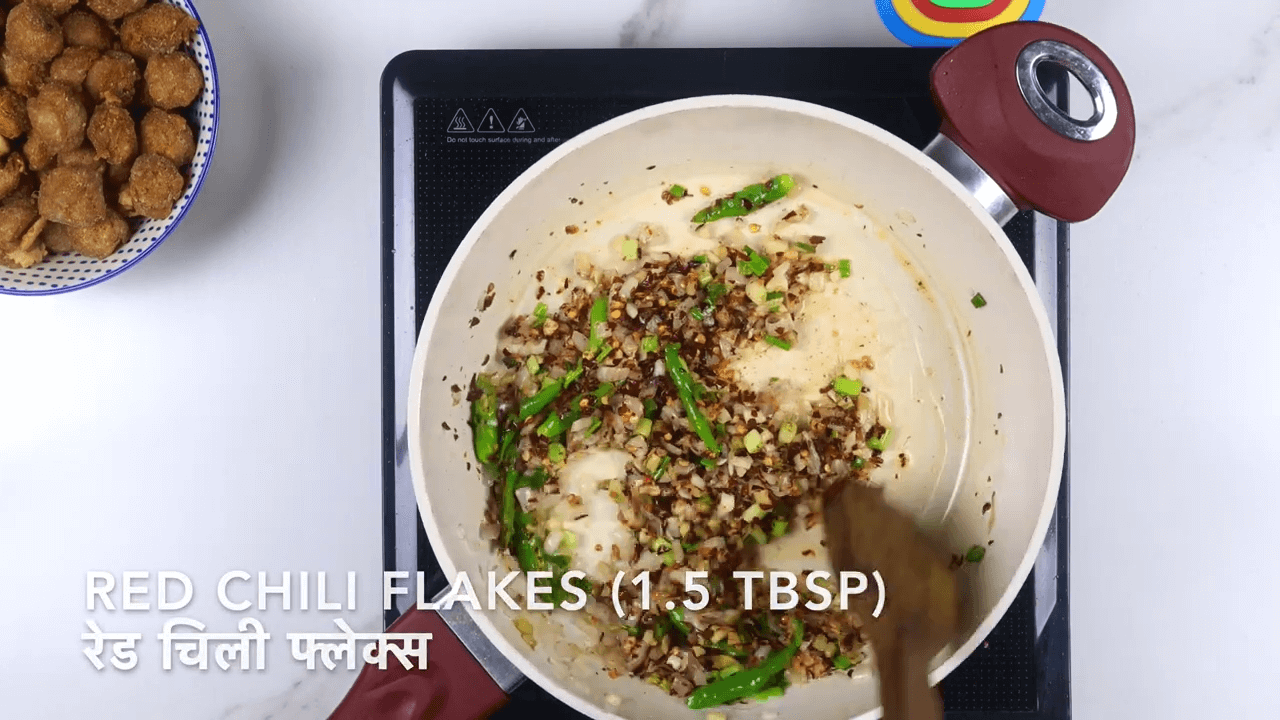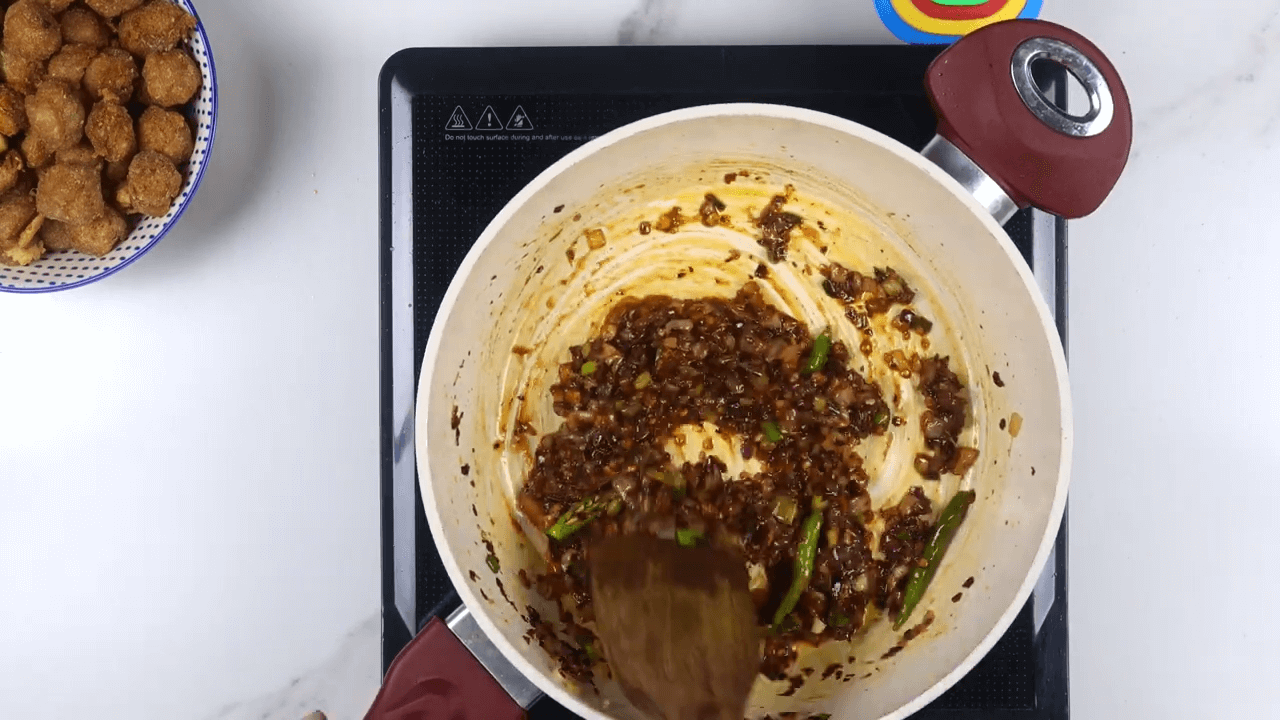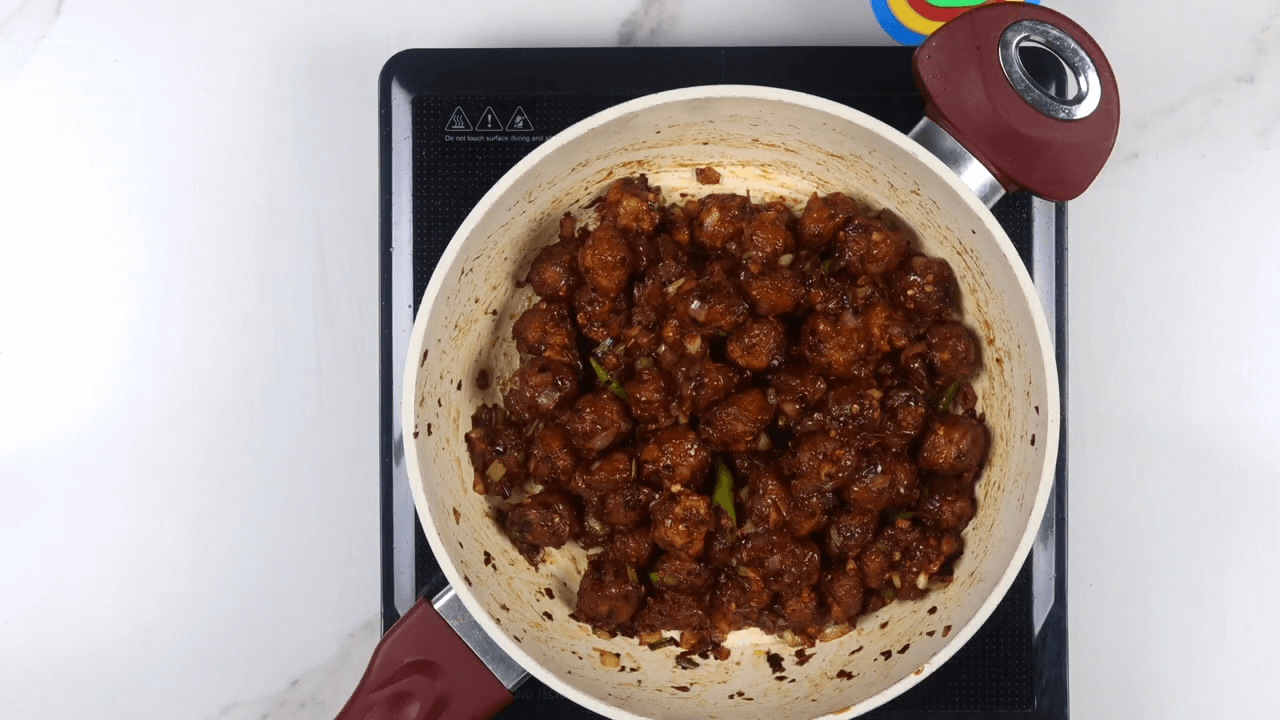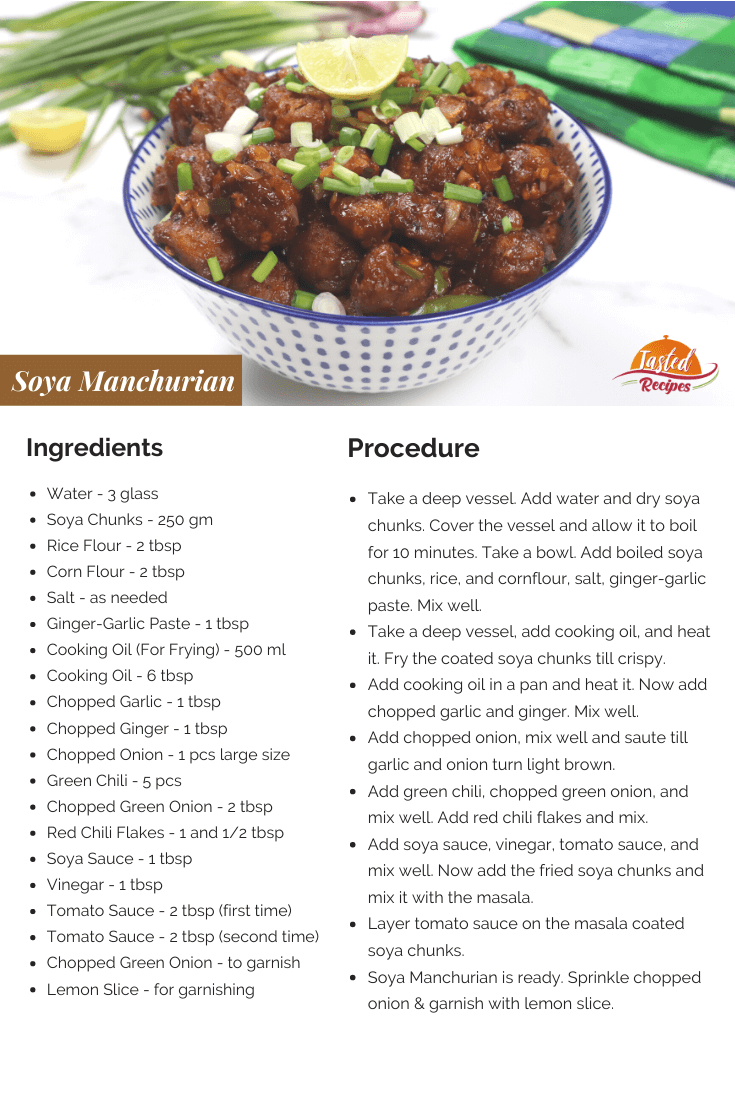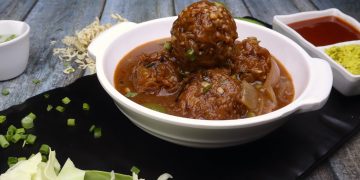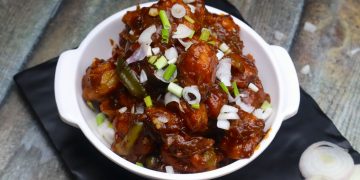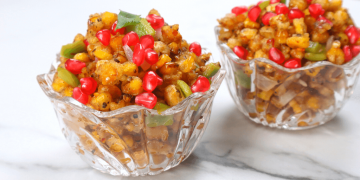Soya Chunks Manchurian is a modified version of the Chinese Manchurian we usually eat. It is an Indian avatar of an authentic Chinese recipe with the main ingredient as soya chunks.
Let me tell you the Chinese Manchurian that we eat on the streets is the Indian version. I mean desi Indian Manchurian. Immaterial of whether it is desi or authentic, we all enjoy eating Manchurian.
Indians typically prefer spicy & masala dishes. Moreover, Indian recipes are pretty famous for their teekhapan & variety. With this in mind, we are sharing a unique recipe today. Let’s take a quick look at it.
You get crispy soya chunks of Manchurian when you coat them in cornflour & ginger-garlic paste, deep fry and further saute them in ground spice & masala powders. Here soya sauce, vinegar & tomato sauce adds the required flavours.
Spices & masala powders differ in this recipe depending on individual taste. Since we are attempting to make authentic Chinese dishes sauce and vinegar are unavoidable. They might seem unhealthy but they are not. On the contrary, that’s how Manchurian is cooked.
Is it Easy to make?
The entire recipe requires 15-20 items. The good news is each & every ingredient is handy. Either it is in your kitchen closet or available at your nearest grocery store.
The initial stages of this recipe differ a little bit. It is because we need to deep-fry soya chunks in hot oil. Of course, ghee and butter are not recommended here. Deep frying soya chunks add a crispy covering that looks similar to Manchurian balls.
Other than crunchy soya chunks there’s something more that adds uniqueness to this recipe. The green chopped spring onions add a peculiar texture to the final product. Even the street food vendors endorse such a legacy while serving.
Soya Chunks Manchurian FAQs
The recipe is lengthy and the ingredient list is long. Therefore, errors are obvious and unavoidable. To minimize them I have compiled a list of questions and answers. Read them carefully before beginning the process.
Will my soya chunks Manchurian taste exactly like the street-style dish?
Yes, you will get the exact taste, texture and aroma similar to the street style Chinese Manchurian. The only difference is the Manchurian balls. We have used soya chunks.
Can I make a Jain version of Chinese Manchurian?
Yes, you can make the Jain version by removing ginger, garlic and onions if any. However, the final dish will be mildly spicy.
Is vinegar a substitute for lemon juice?
No, vinegar is not a substitute for any ingredient mentioned in the item list including lemon juice. Vinegar is strong in taste and has a totally different application in Chinese foods. On the other hand, lemon juice is less tart in taste compared to vinegar.
What is a substitute for spring onion?
Spring onions are seasonal. If available then use them without fail. If not then use chopped coriander instead. Avoid any other leafy vegetable to replace spring onion.
Can we add schezwan sauce or paste?
Using schezwan sauce or paste will give you schezwan soya chunks of Manchurian. It is a different recipe. However, you can use it in this recipe if you are comfortable with the taste.
Why do my soya chunks become hard after frying?
The hardness is due to over-frying the soya chunks. When you overheat the oil temperature becomes unbearable. It will either burn the food or over-fry it. Hence, always lower the heat once the oil reaches minimum temperature.
Try our similar soya recipes like Soya Chunks Crispy Snack and Soya Kabab Recipe.
